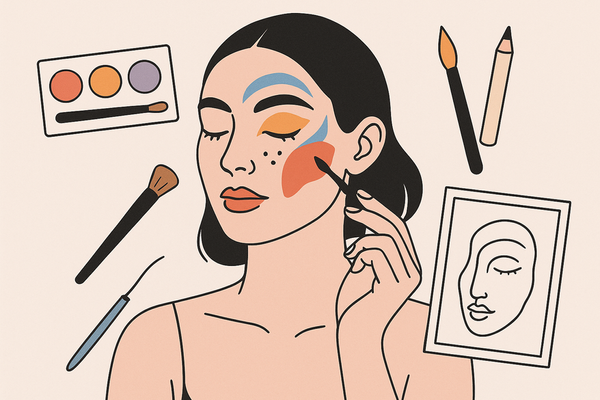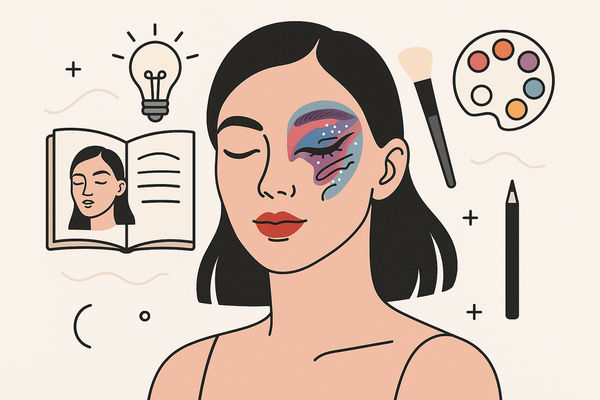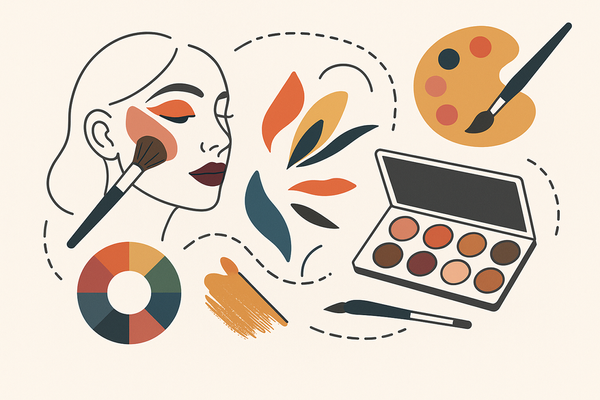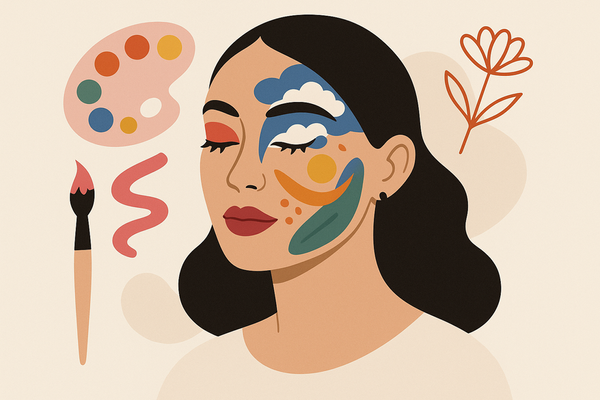Mastering Creative Makeup Designs: Techniques, Trends & Inspiration
Master creative makeup designs with our guide on techniques, trends, and inspiration to transform your face into a living canvas, blending fine art and fantasy.
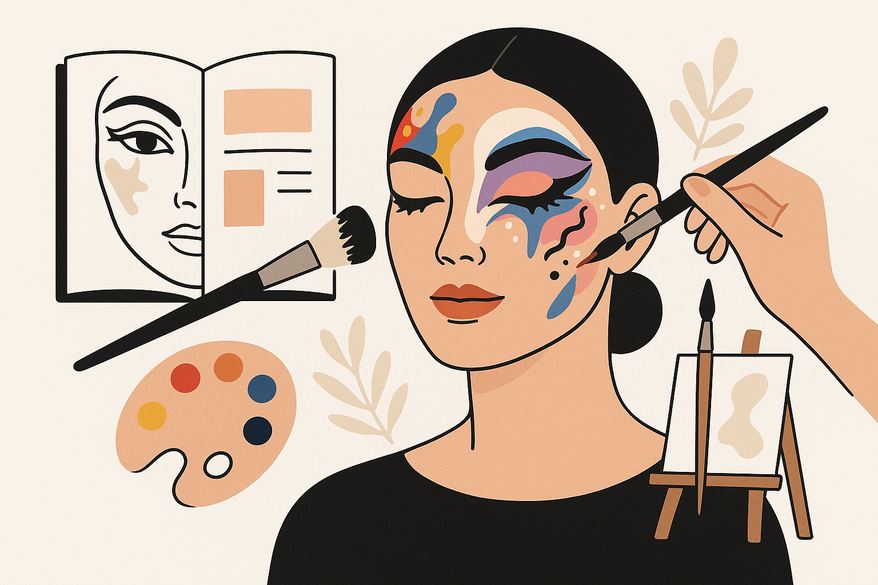
Estimated reading time: 7 minutes
Key Takeaways
- Creative makeup is an art form that merges fantasy, personal expression, and editorial flair.
- Essential tools include pigmented palettes, precision liners, SFX materials, and adhesives.
- Current trends feature bold graphic lines, mixed media textures, and tech-infused effects.
- DIY strategies help beginners start with simple color blocking before advancing to complex looks.
- Resources like tutorials, forums, and AI platforms offer inspiration and guidance.
Table of Contents
- Understanding Creative Makeup Designs
- Essential Tools & Techniques
- Trends & Inspirations
- DIY Ideas & Practical Tips
- Final Thoughts & Resources
Understanding Creative Makeup Designs
Creative makeup designs transform the face into a living canvas, blending elements of fine art, fantasy, and storytelling. Born at the crossroads of performance art and fashion, these avant-garde looks go far beyond subtle enhancements.
Concept & Origins
The roots of creative makeup lie in theatrical transformations and high-fashion editorials. Early makeup artists used bold pigments to convey emotions and narrative, defying traditional beauty norms.
Evolution of Makeup Artistry
- Stage and film makeup enabled dramatic character creation.
- Magazine editorials pushed pictorial makeup into mainstream fashion.
- Social media now accelerates trend cycles and global sharing.
Advances in liquid pigments, silicone prosthetics, airbrushing, and 3D embellishments continue to expand creative possibilities.
Key Terminology
- Avant-garde: Boundary-pushing designs using unconventional shapes or textures.
- Editorial: Visually striking looks for magazines and campaigns.
- SFX: Special effects techniques with prosthetics and unique pigments.
- Color Theory: Strategic use of the color wheel for harmony or contrast.
- Embellishments: Rhinestones, pearls, metallics, and 3D objects for texture.
Essential Tools & Techniques
Essential Tools
- Highly pigmented eyeshadow palettes for vivid color payoff.
- Precision liners and water-activated pencils for sharp details.
- Brush set: flat shaders, detail liners, fluffy blenders, silicone brushes.
- Face-safe adhesives for gems, sequins, and prosthetics.
- SFX materials including liquid latex, silicone prosthetic kits, and body paints.
Step-by-Step Techniques
- Conceptualize: Build a mood board with color swatches and themes.
- Prep the Skin: Cleanse, tone, moisturize, and prime for a smooth canvas.
- Base Application: Apply full-coverage foundation or embrace a bare-skin editorial finish.
- Design Mapping: Sketch your layout with a white pencil or cream liner.
- Color Blocking & Layering: Pack on pigmented shadows, setting each layer with translucent powder.
- Texture & Embellishment: Affix gems, glitter, or 3D elements with face-safe adhesive.
- Detailing: Use fine brushes and precision liners; clean edges with concealer.
- Set & Seal: Finish with a strong-hold setting spray to lock everything in place.
Trends & Inspirations in Creative Makeup Designs
- Bold graphic liners and geometric shapes: floating eyeliner, negative space, asymmetrical lines (see trend report).
- Mixed media textures: metallic and holographic powders, feathers, mesh inserts.
- Optical illusions: sculpted light and shadow for faux 3D effects.
- Tech-infused looks: LED accents, glow-in-the-dark pigments, interactive holographic films.
Influencers like NikkieTutorials and James Charles drive experimental looks on YouTube and TikTok, while runway shows set the stage for high-fashion editorials.
For digital experimentation, try Makeup Check AI. Watch the how-it-works demonstration below:
DIY Ideas & Practical Tips
Beginner-Friendly Strategies
- Start with simple color blocking and bold shapes before tackling 3D elements.
- Embrace “happy accidents”: fix mistakes with makeup remover pens or concealer.
- Customize each look to your face shape, skin tone, and comfort level.
Recommended Tutorials & Communities
- YouTube channels: NikkieTutorials, James Charles, Koren Zander (advanced SFX).
- Forums: Reddit r/MakeupAddiction for feedback and creative challenges.
- Instagram hashtags: #CreativeMakeupDesigns unites global artists.
Troubleshooting Common Issues
- Creasing & smudging: prime well, set layers, finish with strong-hold spray.
- Skin sensitivity: patch-test adhesives and pigments; choose hypoallergenic products.
- Adhesive hiccups: clean skin, let glue get tacky, then apply embellishments.
Final Thoughts & Resources
Creative makeup designs open endless doors for self-expression. From foundational tools to cutting-edge trends, you now have a roadmap to explore and innovate. Pick up your brushes, embrace experimentation, and let your imagination take the lead.
Further reading:
- Explore AI inspirations at creative makeup designs AI
- Discover mood boards at artistic makeup inspiration AI
FAQ
- How do I start with creative makeup if I’m a beginner?
Begin by experimenting with color blocking and simple shapes. Use tutorials and practice on paper or a practice face chart. - What are the best products for sensitive skin?
Look for hypoallergenic, fragrance-free foundations and adhesives. Always patch-test new products. - Can I use regular craft glue for gems?
No—always use face-safe adhesive designed for use on skin to prevent irritation. - How long does a creative makeup look last?
With proper priming, setting powder, and strong-hold spray, looks can last 8–12 hours, depending on activity and climate.

